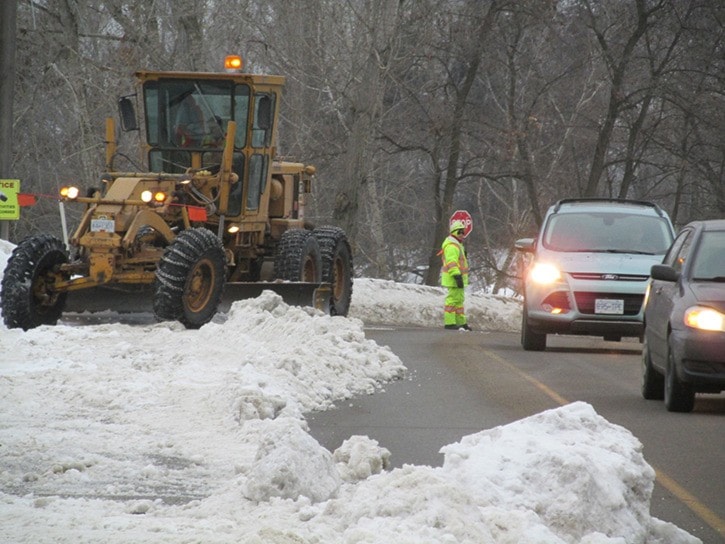Despite two major snow events in December, the City of Trail remains well within its 2012 budget for snow removal.
Patrick Gauvreau, Trail’s public works road and ground superintendent, said the city has plowed through $200,000 of its approximately $560,000 it budgeted for the season.
“Overall, we have spent roughly the same amount as in 2010 and 2011,” he said.
“Which tells me that this year has been no different than previous.”
The same can’t be said for Rossland however. The winter wallop coupled with its downtown renovations has taken a big bite of its 2012 snow removal budget.
“We are over budget approximately 9.5 per cent for the 2012 season,” said Darrin Albo, manager of operations.
“We budget $479,400 for snow clearing. This includes snow removal, plowing and sanding for all city streets, not including side walks,” he added.

Albo said the city’s newly paved bump outs downtown take a little more time and effort to clear.
Fruitvale remains on pace to meet its budget of around $170,000 while Warfield didn’t respond to questions regarding its snow-clearing budget.
A little further afield, the Village of Salmo allocated $80,500 for its 2012 snow removal season. At a glance, the city is under budget by $1,700, said Scott Sommerville, chief administrative officer for the village.
Due to elevation, Salmo gets a fair amount of snow compared to its neighboring communities, said Sommerville.
A major snow event would be 7.5 cm or more, and triggers the automatic authorization of overtime on weekends for the crew, he explained.
“The new global ‘weirding’ is resulting in more frequent ‘rain-on-snow’ events,” said Sommerville. “And this is a challenge we deal with.”
The City of Trail has “snow removal procedures” which prioritize the urgency of removing snow from streets based on usage and what types of businesses are located on those streets, explained Gauvreau.
He said that the first priority is major collectors, emergency routes, and hills with extreme gradients and significant volume, such as Green Avenue.
Next are the bus routes, downtown core, hills with lighter traffic volumes and all remaining residential streets and parking spots.

“When all five priority areas have been completed, lanes will be plowed and all other streets widened.”
Any money remaining in Trail’s snow removal budget at the end of the year is re-allocated into a surplus account for other projects or to offset future snow removal costs.
Gauvreau has been working for the city’s public works since last August, after relocating from Alberta.
His personal observation is that this area receives more snow without the cold frigid temperatures that Northern Alberta is known to get.
“I feel like I’ve won the lottery,” he said.
“I am enjoying the Trail weather, I do not miss the Northern Alberta winters.”
